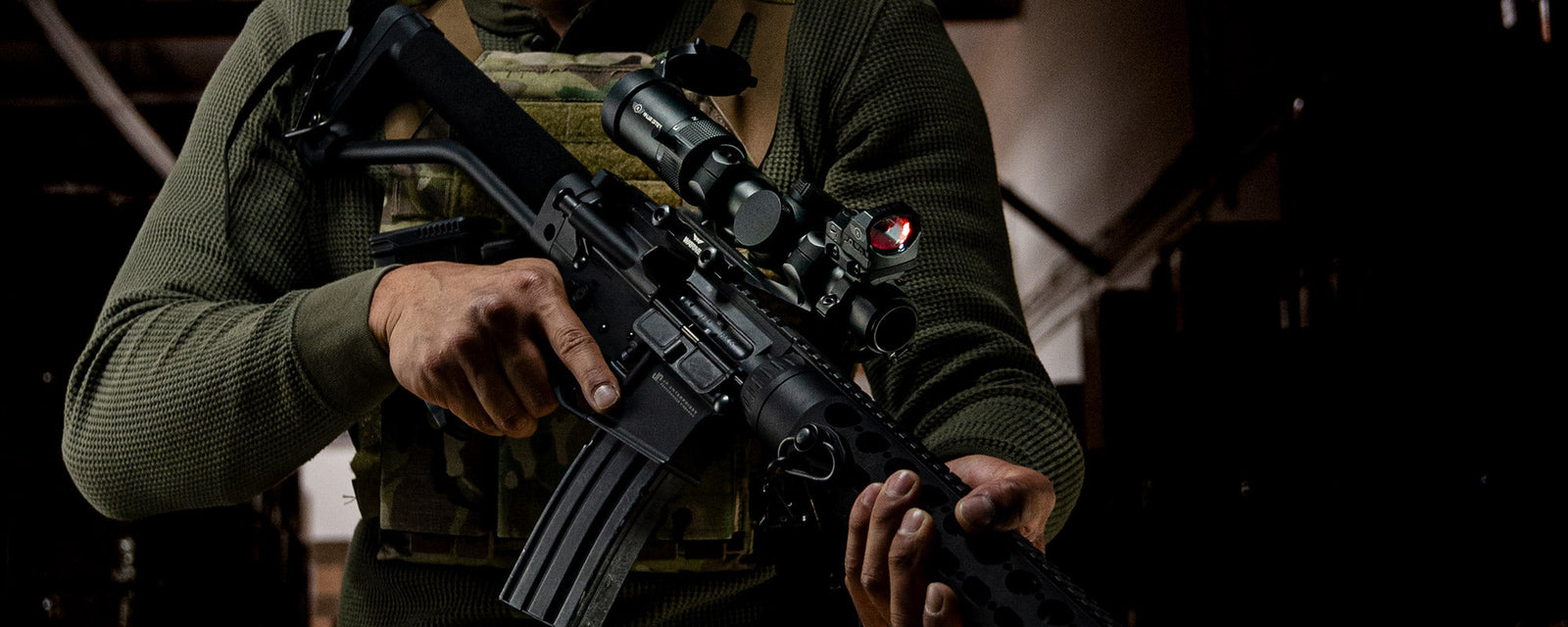As ubiquitous and varied as rifle scopes are today, there was a time when a “Riffle with a Tellescope to it” was quite a sight indeed.
Don’t worry folks, we’ve got more puns in store for you.
We’ll take a look into the very early history of rifle scopes, at a time when reticles were being modeled after surveying equipment and glass was being ground to fit individual prescriptions.

Our story starts back in 1776, with Charles Willson Peale. Though most known for his portraits of notable Revolutionary War figures, we’ll bring him up today to talk about the time he almost lost an eye.
Charles was working on an unusual idea at the time - that a telescope could be attached to a rifle. His assumption was that, if you could actually see a target farther away, you might be able to hit that target. While his theory is largely sound, his true discovery would change the face of scopes - and himself - forever.
As many of you are well aware, rifles have recoil. Recoil is one of the primary reasons you don’t want to put your eye up against the eyepiece of a scope, as you might for a telescope. Charles was only familiar with telescopes at this point, and was designing the first rifle-mounted scope in consultation with an astronomer.
When he eventually took the rifle out, he almost put his eye out. While his first discovery was that you could attach a scope to a rifle, his second discovery was that you’d need eye relief if you wanted to shoot more than once.
 This would represent the pinnacle of rifle scope technology until around 1835. At that time, a fellow named
John R. Chapman applied his knowledge of surveying equipment to the design of a rifle scope. Basing the scope’s reticle off the thin, precise lines of a surveyor’s transit, he worked out a good set of early crosshairs. While he was entirely willing to design the scope, he didn’t want to produce it and also neglected to patent it. Fortunately, there was a producer of precision rifles who was willing to manufacture and sell it. This second person was Morgan James.
This would represent the pinnacle of rifle scope technology until around 1835. At that time, a fellow named
John R. Chapman applied his knowledge of surveying equipment to the design of a rifle scope. Basing the scope’s reticle off the thin, precise lines of a surveyor’s transit, he worked out a good set of early crosshairs. While he was entirely willing to design the scope, he didn’t want to produce it and also neglected to patent it. Fortunately, there was a producer of precision rifles who was willing to manufacture and sell it. This second person was Morgan James.
The Chapman-James scope designs were the next evolution in rifle optics. It was possible to shoot more than a few shots without your scope moving out of alignment, which put them miles ahead of their competitors. The secret lay in Chapman’s design for a drawn-steel tube.
Even better, they had a fine reticle and finely ground glass. Some designs, believe it or not, were also adjustable for different distances. Largely, the scopes were pretty low magnification and had somewhat subpar glass. The length and narrowness of the tubes, combined with the fringing around the edges of the view, left only a small window where the target was clearly visible. But they worked.

Roughly a 3-day walk west of James’ facility lay the future location of William Malcolm’s own rifle scope efforts. Around 15 years after the Morgan-Chapman scopes took hold of the sharpshooter world, Malcolm applied his own optical knowledge to the creation of something even better.
With magnification, eye relief, and reticles already standard, Malcolm elected to design everything to a higher standard. He was the first to use achromatic lenses, which cut down on the colorful fringing that plagued earlier scopes. He offered designs with fine elevation and windage adjustments. Even more fantastic, he could grind the glass to fit the prescription of your eyeglasses. Malcolm’s scopes were built with a fixed magnification, somewhere between 3 and 20 power. Whatever magnification you picked, it was a far sight more than the scopes even a decade prior. And, an added bonus, the rifles of the times were reaching far enough for a scope to be somewhat useful.
Over the course of nearly a century, these four designers laid the groundwork for many of our present-day scopes. From Peale, we saw that scopes were able to stay on the rifle - and should stay a few inches away from your eye. From James and Chapman, scopes were finally being manufactured for the optically-interested consumer, which didn’t break right away. From Malcolm, we see improvements to the glass, the mounts, and the magnification - turning ‘the riffle with a tellescope’ to it into a scoped rifle… And the rest, as historians would tell us, is history.

I’ll leave you with this segment from the National Eagle Newspaper of Claremont, New Hampshire, dated October 17th of 1861.
“The best marksmen of the state are invited to enlist, after passing a satisfactory examination, and complying with the following test: Each applicant, when firing at a rest with a telescope rifle, at a distance of two hundred yards, to put ten consecutive shots in a target, the average distance not to exceed five inches from the center of the bull’s eye to the center of the ball.”
Do you think you could pass the original sharpshooter test?
---
We hope you’ve enjoyed this look into the world of firearms. If you’d like to view this in a different format, it’s available in other convenient locations. To hear the audio, check out the podcast. For the video version, take a peek on our YouTube. Don’t hesitate to drop by our instagram for more photos, at @LeatherwoodOptics.





Leave a comment (all fields required)